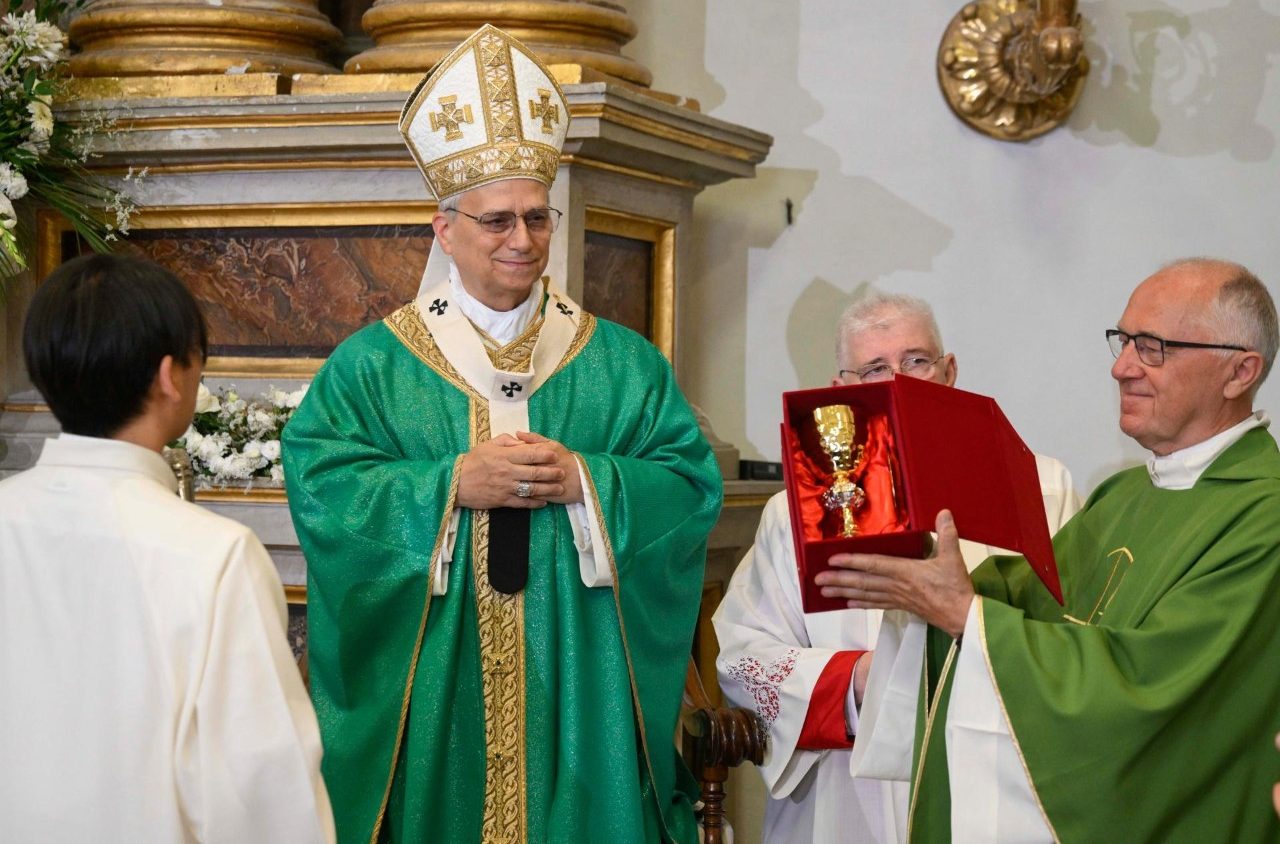Castel Gandolfo – At 10 a.m. this morning, on the 15th Sunday in Ordinary Time, Pope Leo XIV presided over Holy Mass at the Pontifical Parish of St. Thomas of Villanova in Castel Gandolfo. A simple yet deeply meaningful celebration, marking not only a physical return, but also a symbolic gesture: the Bishop of Rome once again among the faithful of this hilltown of the Alban Hills, long regarded as the “second home” of the Popes. It had been years since a Pope last celebrated Mass in the pontifical parish of the town. The image of the Successor of Peter returning to Castel Gandolfo — not as a tourist but as a pastor and “fellow villager” — restores a long-lost grammar of presence. It is a gesture that recalls what is essential: closeness, rootedness in a faith lived in places that preserve memory and identity.
It’s not nostalgia — it’s discernment
To take into account the sensus fidelium also means to hear the simple and profound desire of the People of God: to see the Pope as a present father, who shares the places, times, and gestures of faith. The return of Leo XIV to Castel Gandolfo is thus not a nostalgic detail or a media stunt. It is a sign. And signs speak clearly. Prevost has shown his freedom in making this choice, driven by love for a place of peace and by awareness of the need for rest. The Pope, like every priest, is not a superhero: he too needs time to pause, pray, and rest. The faithful gathered today were the living testimony of a people eager to have the Pope once again among them — not only for economic or touristic reasons, but because of the love and affection that has bound them to the figure of Peter for years. They did not witness a postcard event. This is no time for slogans or false pauperism. Leo XIV shows his freedom and his ability to face reality with truth. What we have at our disposal — thanks to the generosity of the faithful and the lives given by many people of goodwill — must not be despised, but used well. If new expenses arise, they will be evaluated prudently and undertaken with sobriety. But as has often been said, there is no sense in acquiring something just because it “appears” poorer, nor in abandoning places of symbolic and pastoral value, just because the media continues to spread misinformation, even about the Pope’s vacations. The community of Castel Gandolfo felt the Pope celebrate with them, for them, among them. In a time when synodality risks being confused with the multiplication of tables, documents, and slogans, the image of the Pontiff returning to his people, in a concrete community, can offer a key to rediscover the authentic meaning of “walking together”: not only planning, but inhabiting. Traditions, when not wielded as ideological weapons, can still prove to be paths of communion and instruments of listening. This too is discernment.
The homily: compassion as a gaze, not a program
In his homily, Leo XIV meditated on the Gospel of the day, the parable of the Good Samaritan, offering a rich and Christologically-centered reflection. “The gaze makes the difference,” the Pope affirmed, stressing how decisive it is how one looks at the other: “one can see and pass by, or see and feel compassion.” The Pontiff reread the parable as a narrative of God’s own action in Christ: “The Good Samaritan is above all an image of Jesus, the eternal Son sent by the Father into history precisely because he looked upon humanity without passing by.” It is compassion — not improvised, but born from the gaze, heart, and responsibility — that lies at the heart of the Gospel message. “Healed and loved by Christ, we too become signs of his love and compassion in the world.” The homily concluded with a strong and concrete appeal: “To see without passing by, to stop our busy running, to let the life of the other — whoever they may be — with their needs and sufferings, break our hearts.” It is in this breaking of the heart that all authentic fraternity is rooted.

A gift for the community
At the end of the celebration, the Pope presented a symbolic gift to the parish priest: the paten and chalice used during the Holy Mass. “They are instruments of communion,” said Leo XIV, “and can serve as an invitation to live in communion, to truly promote fraternity, this communion we live in Jesus Christ.” A small gesture, which in its sobriety recalls that theology of the everyday, made up of presence, listening, and sharing. In times when distance risks becoming the norm and structures overshadow human contact, today’s celebration in Castel Gandolfo speaks otherwise. No proclamations, no strategies — but a sign. And true signs need no further explanation. They speak for themselves.
d.T.M.
Silere non possum